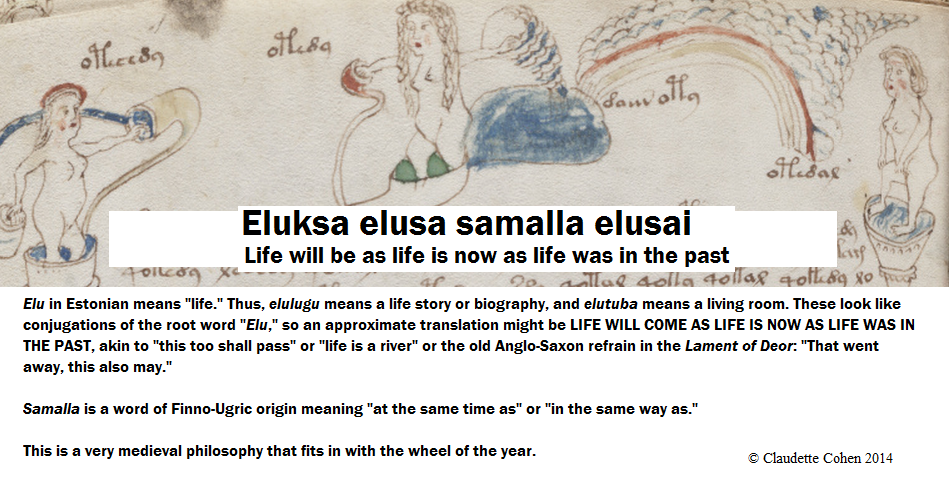Over 70 words and names gleaned using a new transcription alphabet indicate constructions of an old Finno-Ugric origin with a substantial amount of Old Norse. In addition, there is a distinct Slavic influence. Some of the pages contain text suggestive of Karelian runic charm songs or Sami joiks in that they are highly alliterative and trochaic.
More here:
http://voynichbirths.blogspot.com/2014/12/follow-on-facebook-functiond-s-id-var.html
The pages depict female heliocentric star charts resembling Nordic brooches. They also depict kolovrats, octagrams, sauna/banya, torcs, a seidr staff, a distaff, a drop spindle, ceremonial spoons, the sun cross symbol, intercalary year, red conical roofs, onion domes, plants from the northern hemisphere, a landscape resembling the Ruskeala marble caves, zaftig fair blond women, a Permic-like lizard of the underworld, the pike of Tuonela, and runic glyphs (comparable to those found in Icelandic magic books).
Some visual designs are reminiscent of a Sami shamanic drum, Karelian embroidery, and Vologda lace. The herbal powder receptacles are modified sewing necessaires in the tradition of north European treenware.
All of this points to core elements of north European culture that can be found in Scandinavian, Finno-Ugric, north Germanic, and to some extent Celtic traditions. These belief systems go back thousands of years.



